




The idea is quite simple. Two dolls, one white, one
black, are conjoined at the waist. A shared skirt flips over the head of one
doll, concealing it to reveal the face of the other. Another flip of the skirt
reverses the process, revealing the head of the second doll. So-called
“topsy-turvy dolls”—named for an expression meaning upside-down—invite active
play, with both the doll and the concept of race itself.
But this simple toy carries complex meaning. Although
topsy-turvy dolls were popular among children at the turn of the 20th century
and later, questions remain about their intended purpose. Would children play
differently with the white doll, as opposed to the black one? And how can
racial equality be imagined, when, as one historian describes it, “to face one
is to skirt another?”
In 1919, Bertha M. McClelland of Walton, New York, filed an application with the U.S. Patent and Trademark Office for a reversible topsy-turvy doll. Her description of the toy explicitly called for a bandanna to be worn on the black side “to imitate the head of a Dinah doll.” The white side, she elaborated, “may be decorated in any desired manner.” Her patent was granted the following year.
Topsy-Turvy Dolls
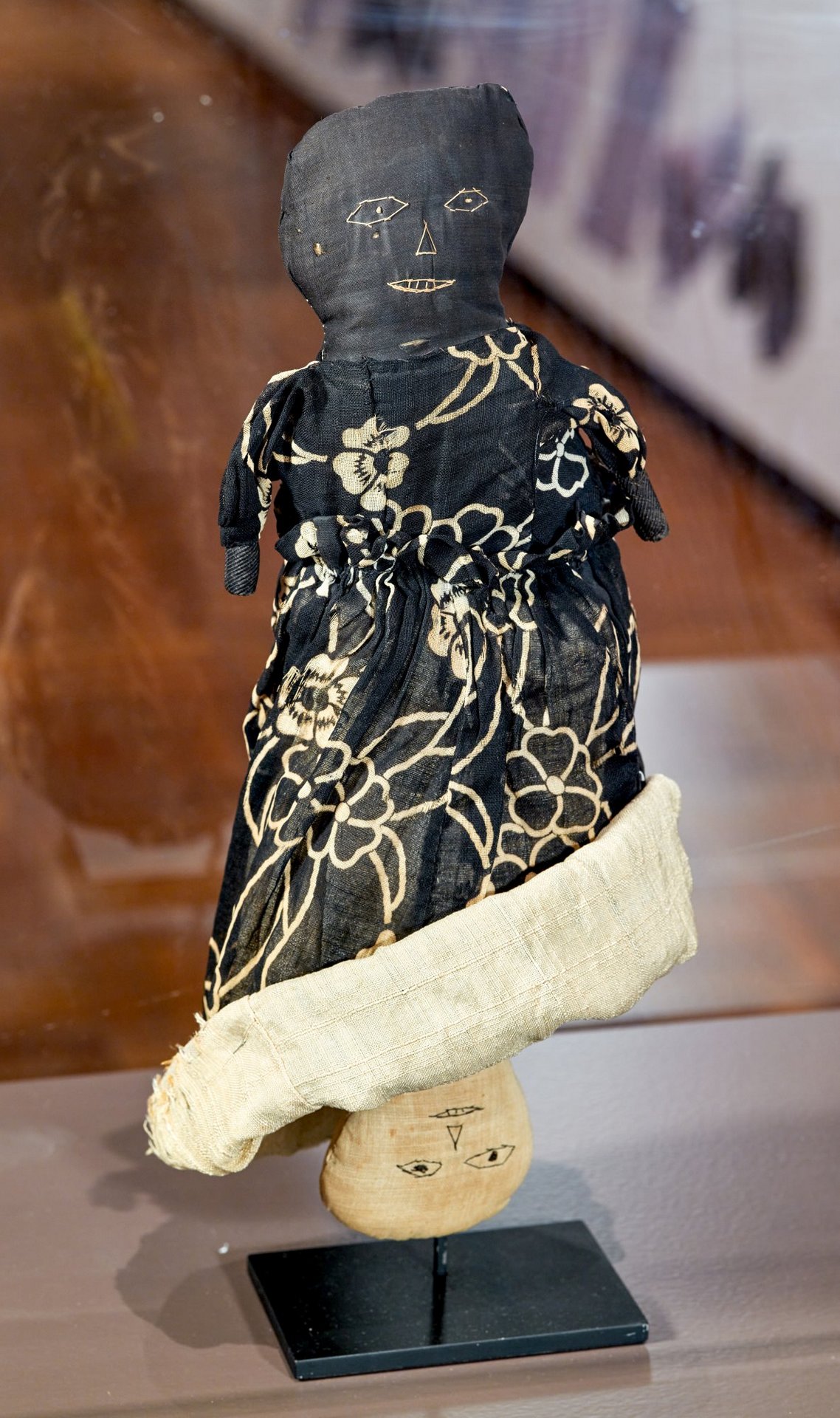
Topsy-turvy
doll in print dress,
US, early 20th century
Mixed
fabrics

Simple
topsy-turvy doll,
US, ca. 1920-30
Cotton
Topsy-turvy
dolls were made with varying degrees of complexity. This doll is notable for
its minimalism.
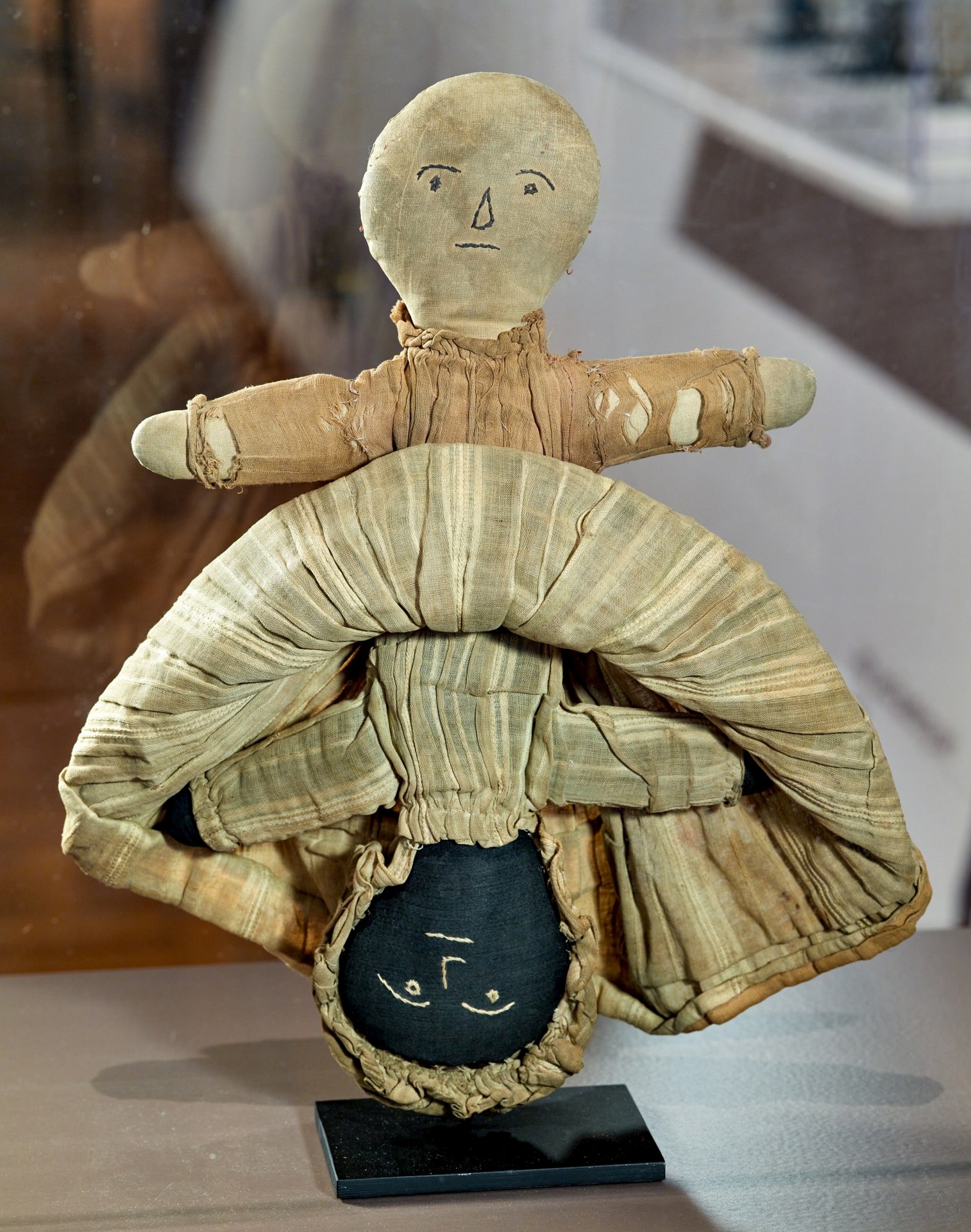
Topsy-turvy
doll in sheer dress,
US, early 20th century
Mixed
fabrics
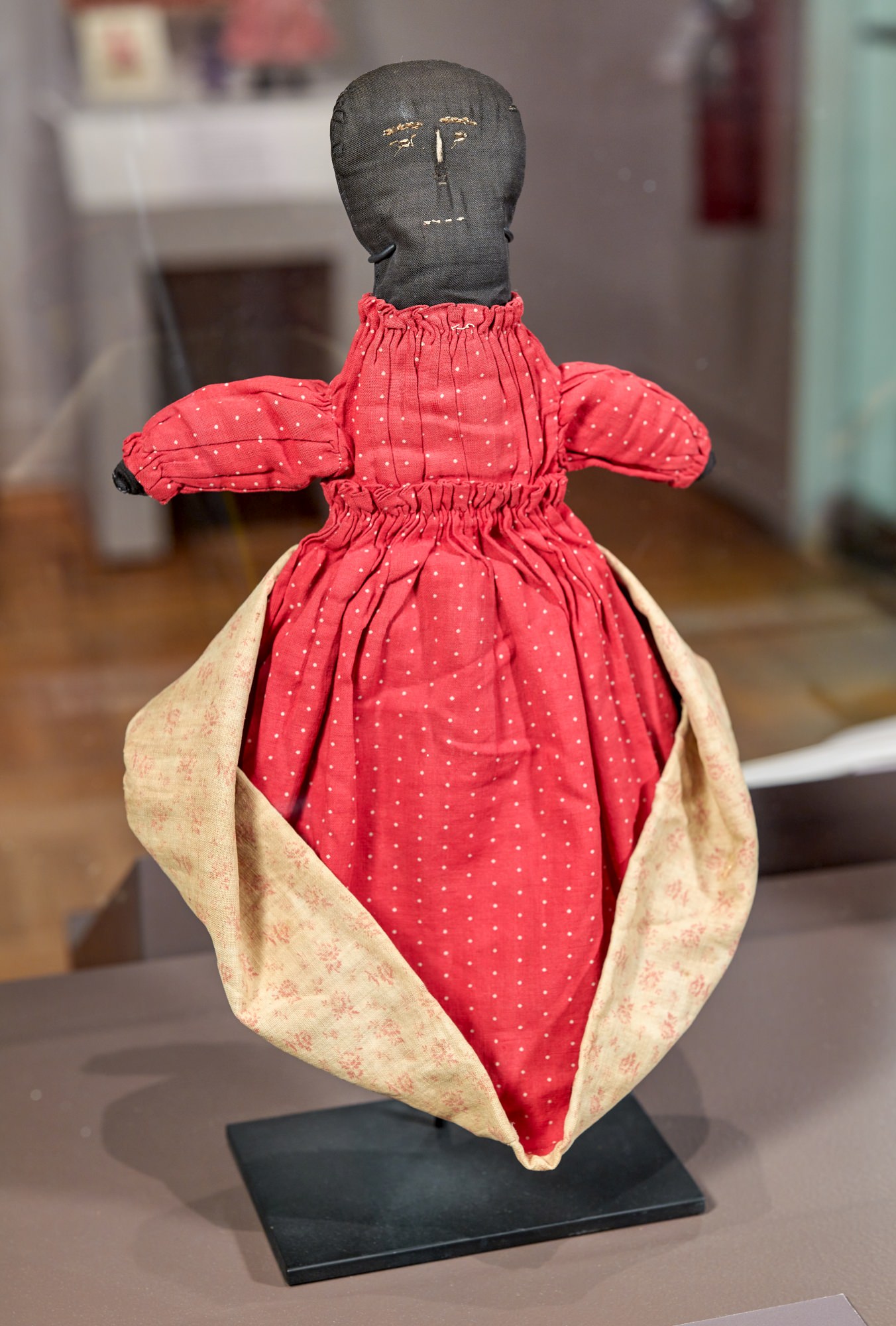
Topsy-turvy
doll with polka dot dress, US, early 20th century
Mixed fabrics
The
white side of this doll has sustained more wear than the reverse, perhaps
suggesting which side was favored.

Topsy-turvy
doll with orange and red dress,
US, late 19th century
Mixed
fabrics
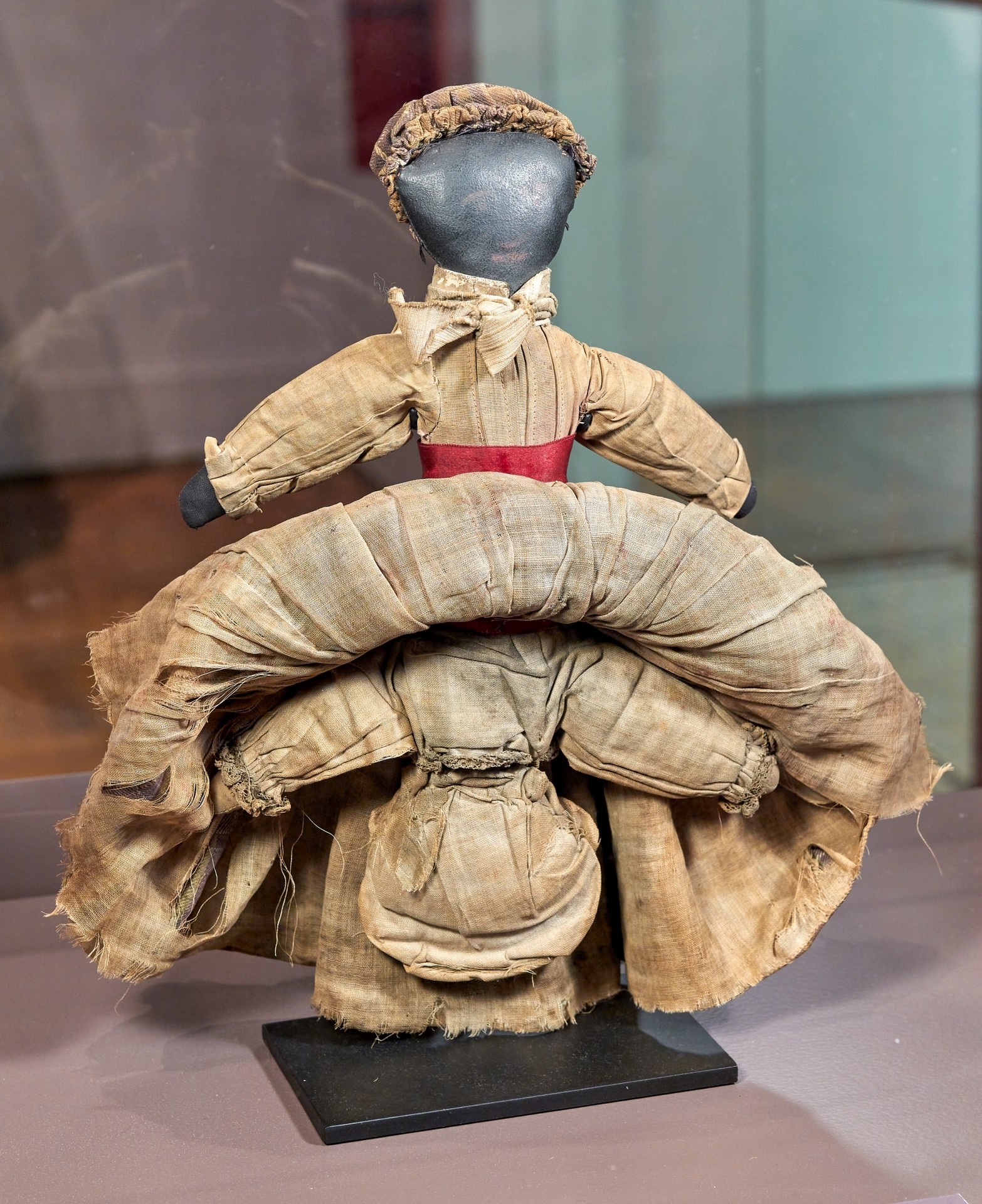
Topsy-turvy
doll with mob cap,
US, late 19th century
Mixed
fabrics, painted leather
Topsy-turvy
doll with red and brown caps,
US, early 20th century
Mixed
fabrics, paint
Leo Moss and the (Re)making of Black Dolls

The
meaning of any doll extends far beyond the surface, but for these examples made
by Leo Moss, this is especially true. As a handyman in Macon, Georgia, Moss
would take home scraps of wallpaper and use them as papier-mâché to sculpt
layers onto manufactured dolls he found or traded for.
He remolded the hair,
features, and even the facial expressions of the dolls, finishing by tinting
the skin with boot dye, until they resembled himself, family members, or
neighbors.
CAT
scans and X-rays of the dolls reveal Moss’s layering process and even reveal
items like long-silent voice boxes hidden within the cloth.
Scan
photographs courtesy of Steve Eilenberg.
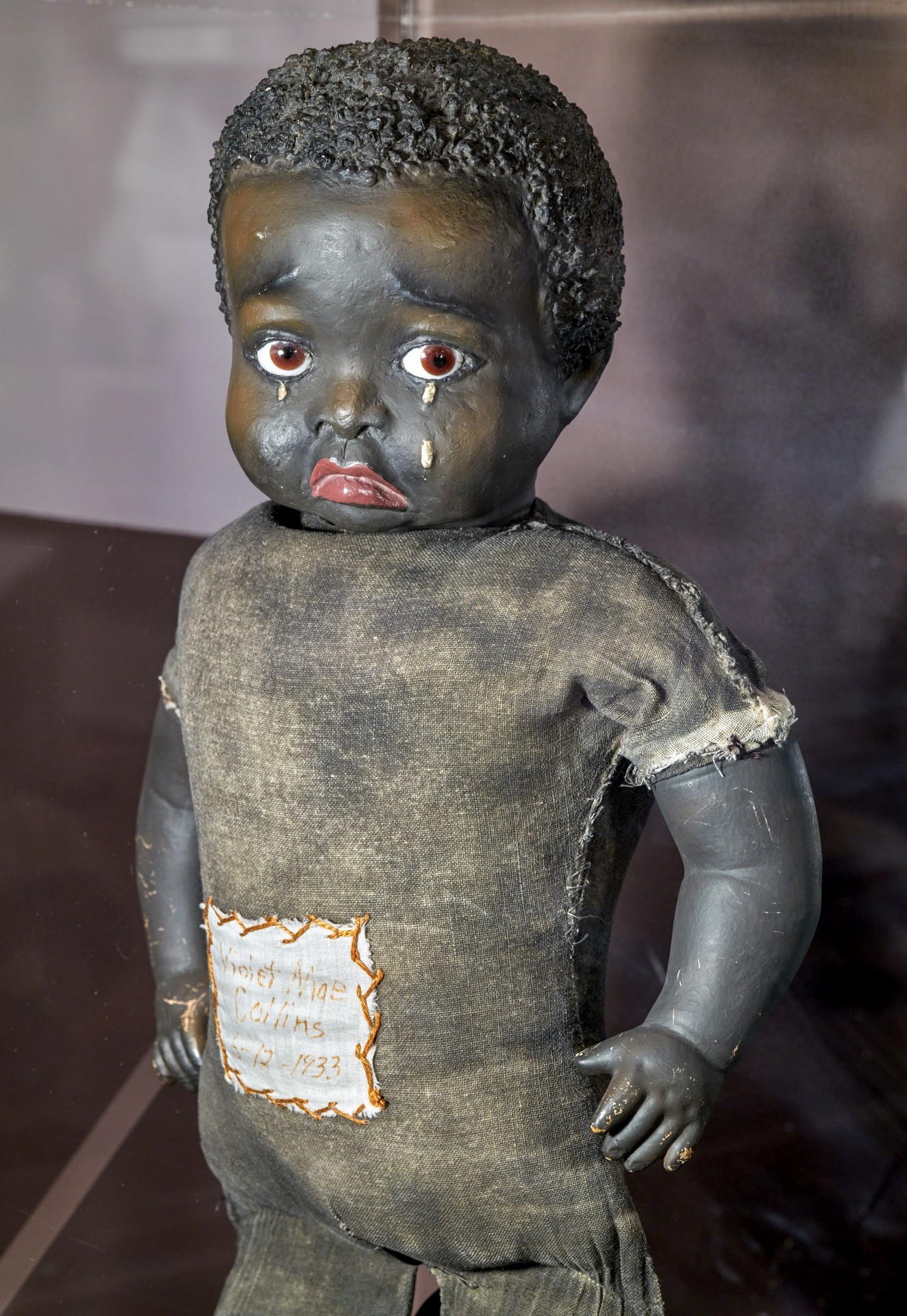
Leo Moss (d. 1936),
Undressed doll with tears,
Macon, GA, ca. 1933
Manufactured body, mixed
fabrics, papier-mâché,
glass

Leo
Moss (d. 1936), Dressed doll with tears,
Macon, GA, ca. 1922
Manufactured
body, cotton, papier-mâché, glass

Leo
Moss (d. 1936), Doll in suit and bowtie,
Macon, GA, early 20th centuryManufactured body, mixed fabrics, papier-mâché,
leather, glass
